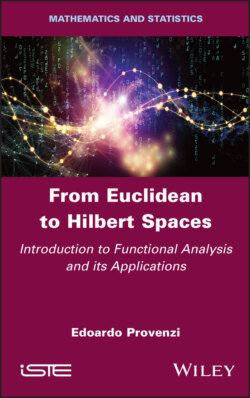Читать книгу From Euclidean to Hilbert Spaces - Edoardo Provenzi - Страница 21
1.7. Existence of an orthonormal basis: the Gram-Schmidt process
ОглавлениеAs we have seen, projection and decomposition laws are much simpler when an orthonormal basis is available.
Theorem 1.13 states that in a finite-dimensional inner product space, an orthonormal basis can always be constructed from a free family of generators.
THEOREM 1.13.– (The iterative Gram-Schmidt process6) If (v1, . . . , vn), n ≼ ∞ is a basis of (V, 〈, 〉), then an orthonormal basis of (V, 〈, 〉) can be obtained from (v1, . . . , vn).
PROOF.– This proof is constructive in that it provides the method used to construct an orthonormal basis from any arbitrary basis.
– Step 1: normalization of v1:
– Step 2, illustrated in Figure 1.5: v2 is projected in the direction of u1, that is, we consider 〈v2, u1〉u1. We know from theorem 1.12 that the vector difference v2 − 〈v2, u1〉u1 is orthogonal to u1. The result is then normalized:
Figure 1.5. Illustration of the second step in the Gram-Schmidt orthonormalization process. For a color version of this figure, see www.iste.co.uk/provenzi/spaces.zip
– Step n, by iteration:
